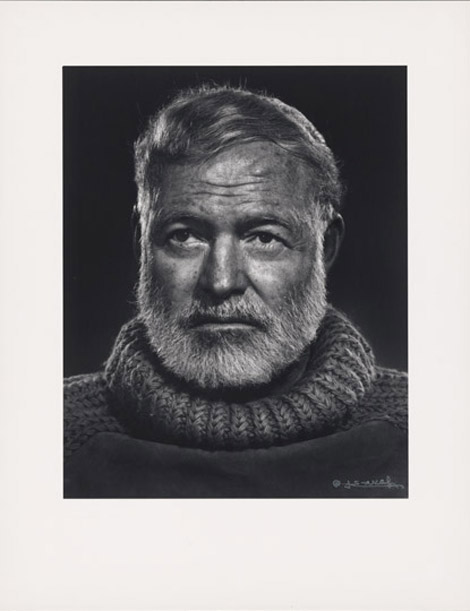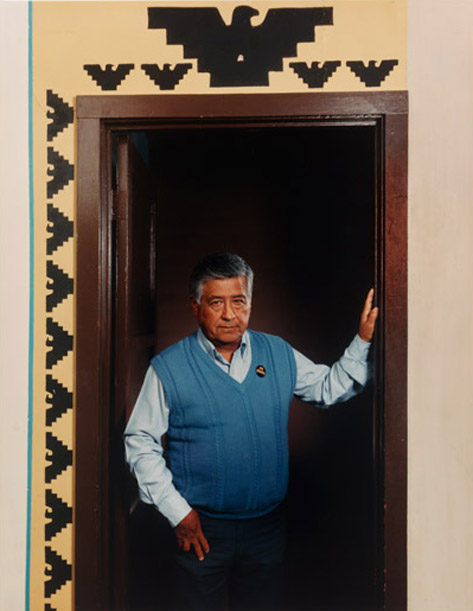The Day Winston Churchill Lost His Cigar
Thanks to a gift of over 100 photographs, the National Portrait Gallery celebrates Yousuf Karsh’s iconic photography with an installation of 27 portraits
/https://tf-cmsv2-smithsonianmag-media.s3.amazonaws.com/filer/74/0c/740cf308-2f7b-4ef8-911f-1c1e71a6e061/npg_93_145_churchill_r.jpg)
A portrait of Winston Churchill photographed by Yousuf Karsh during the darkest days of World War II reveals a leader resolute in the face of crisis. The year was 1941; Churchill was visiting Canada, and the Nazi puppet government in France had just sworn to wring the neck of Britain like a chicken. Staring straight into Karsh’s camera, Churchill’s eyes are steely, almost obstinate. Moments prior, he had stood in the Canadian parliament, hands on hips, and announced passionately: “Some chicken! Some neck!”
When Karsh took the iconic photo—the one that would grace the cover of Life magazine and launch his international career—he was a young man, excited but nervous about photographing the historic figure. MacKenzie King, former prime minister of Canada, had first noticed Yousuf when he was photographing a meeting with FDR. King asked Karsh if he would photograph Churchill during the Canadian visit, and Karsh agreed.
To prepare, Karsh practiced with a subject similar in stature to Churchill from the waist down. He set up his equipment in the speaker’s chamber in the Canadian House of Parliament, a huge Tudor apartment that was used for the speaker to entertain guests. Wrangling hundreds of pounds of photography equipment, Karsh next waited patiently for the moment when Churchill would finish his speech and exit the House of Commons and enter the speaker’s chamber.
On the tail of his impassioned speech, Churchill came striding into the chamber, arms outstretch, hands open: in one, somebody placed a glass of brandy, in the other, a Havana cigar. It took a moment, but Churchill soon noticed the small, young photographer standing amid his mass of equipment.
“What’s this? What’s this?” Churchill demanded.
Karsh realized, suddenly, that no one had told Churchill that he was to have his picture taken. “Sir, I hope I will be worthy enough to make a photography equal to this historic moment.”
Churchill, reluctantly, acquiesced—sort of. “You may take one.”
One picture, one chance.
Churchill relinquished his glass to an assistant and began to sit for the photograph, still puffing on his cigar. Karsh readied the equipment but, just before taking the picture, he placed an ashtray in front of Churchill, asking that the prime minister remove the cigar from his mouth.
Churchill obstinately refused, and Karsh was perplexed: the smoke from the cigar would certainly obscure the image. He returned to the camera, ready to take the picture—but then with lightening speed, Karsh leaned over the camera and plucked the cigar from Churchill’s lips.
“He looked so belligerent, he could have devoured me,” Karsh would remember later, and it’s a belligerence that comes across in the famous photograph—a scowl over the pilfered cigar that came to represent, seemingly, a fierce glare as if confronting the enemy.
Karsh’s iconic Churchill portrait, as well as 26 other photographs, are on display at the National Portrait Gallery through April 27, 2014. The installation is made possible thanks to a large gift—more than 100 photographs—to the Portrait Gallery by Yousuf Karsh’s wife Estrellita Karsh.

Yousuf Karsh’s portrait of Ernest Hemingway, taken in 1957. His wife Estrellita says Yousuf described Hemingway as “the shyest man he ever photographed.” Photo courtesy of the National Portrait Gallery.
“Yousuf was so thrilled when he came over as a poor Armenian immigrant boy in 1927 to be in this country. He always called it (Canada, America and the United States) the sunshine of freedom,” says Mrs. Karsh. “He would be thrilled that his photographs of Americans are here—and what better home than the Smithsonian, really, what better home.”
The 27 photographs span Karsh’s long career, from the oldest image (a 1936 black and white of FDR, ) to a color photograph of César Chávez, taken 11 years before Karsh’s death in 2002.
“In selecting the portraits to feature, I wanted to spotlight Karsh’s ability to create distinctive and evocative images of such a wide range of famous Americans—from Eleanor Roosevelt to Colonel Sanders to I.M. Pei,” Ann Shumard, curator of the exhibit, explains. “It is my hope that visitors to the exhibition will come away with a new appreciation for Karsh’s singular artistry as a portraitist.”
Spanning nearly six-decades, Karsh gained a reputation for photographing some of the most iconic and influential men and women in the world, from Fidel Castro to Queen Elizabeth. But behind the iconic faces lies a kind of radiant humanity that Karsh was so skilled at capturing: the person behind the mask of society.
“His honest, open approach, his great ability to have the viewer give the best in himself—that comes through,” Mrs. Karsh explains. “And this is what people see whether they’re going to see it in 1920, 1930, 2015 or 3000. That is the element that remains.”
The Churchill portrait is on view until November 2, 1014. From May 2, 2014 to November 2, 2014, the museum will display an ongoing rotation a selection of portraits from the Karsh collection. To see a selection of the portraits online, visit our photo collection.
